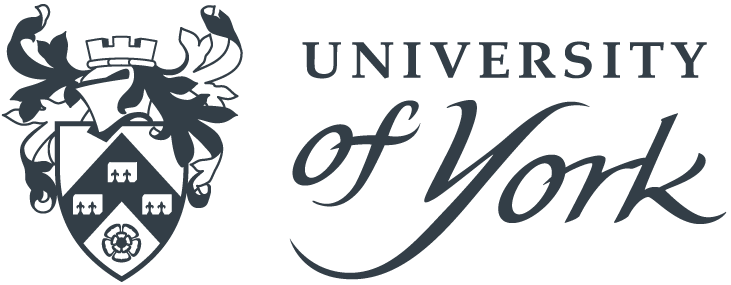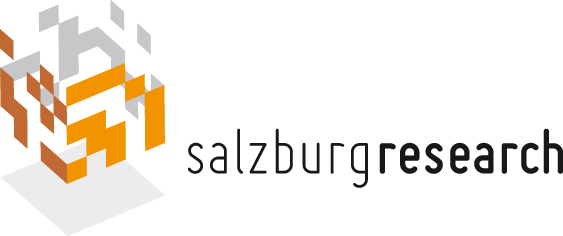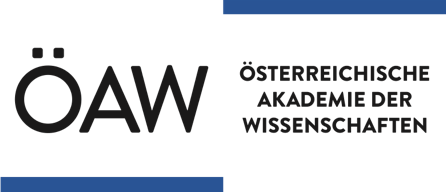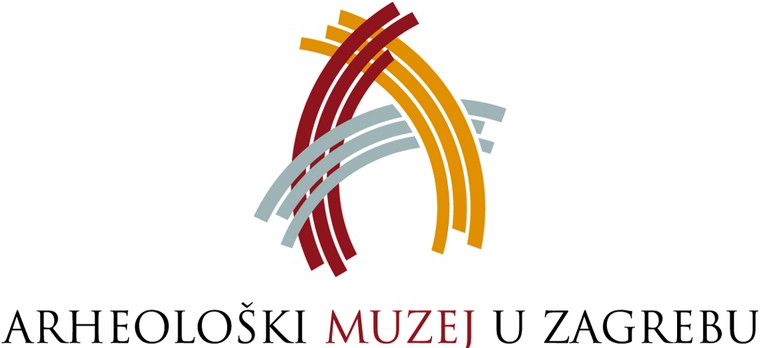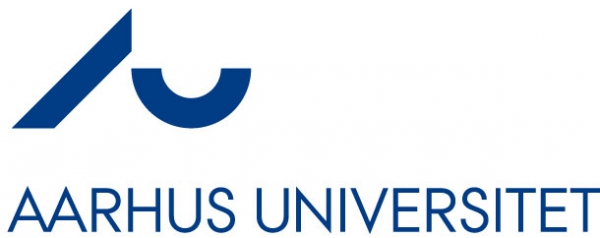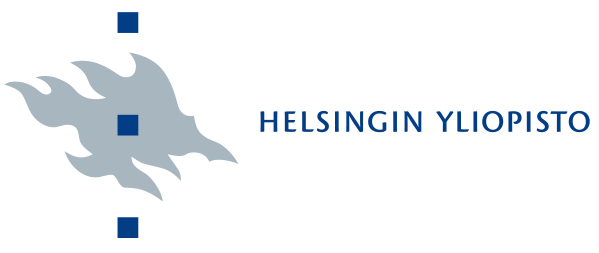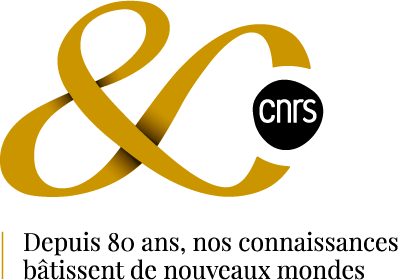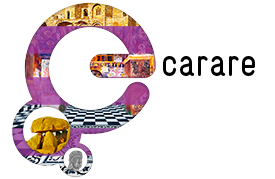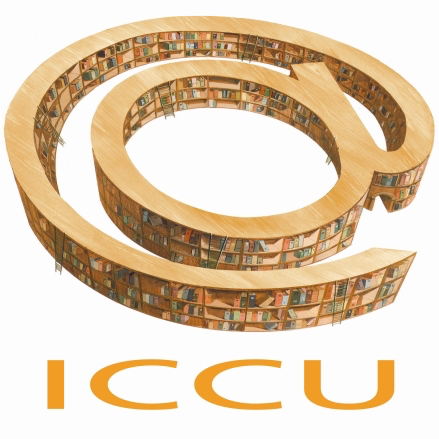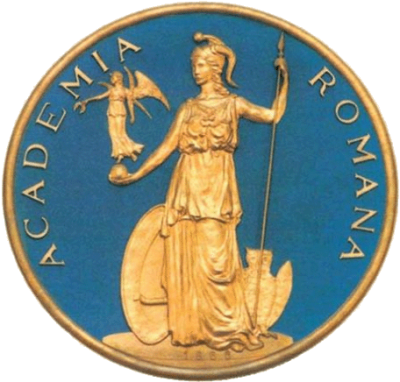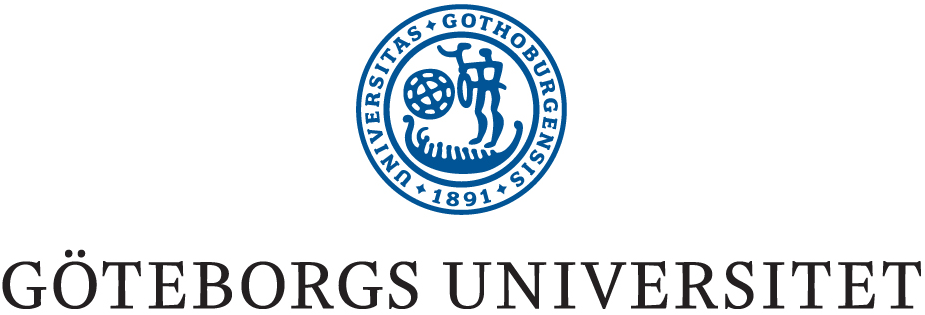The Coordinator: PIN is a research agency, a consortium created by the University of Florence with other public bodies and industrial associations to support the implementation of advanced research projects. Research activity is organized in laboratories, the one in charge of Cultural Heritage applications being VAST-LAB. It aims to support scientific research centered on knowledge, valorization and preservation of Cultural Heritage, and to improve understanding of its value by encouraging dissemination to the general public. VAST-LAB’s research focuses mainly on the creation and dissemination of international standards for dataset digitization and accessible database design, as well as on the development of technological platforms that guarantee interoperability between different archives and the stakeholders involved in their management.
The University of York has been a partner in over 180 EU projects including 14 ERC research grants, 35 Marie-Curie Fellowships, 17 ITNs and 7 Infra projects. The Department of Archaeology is one of the top archaeology departments in the UK, ranking 4th overall in the 2014 REF, and 2nd for its research impact. Since 1996 the Department has hosted the Archaeology Data Service (ADS), the world- leading digital data archive for archaeology. The core objective of the ADS is to support research, learning and teaching with high quality and dependable digital resources. It does this by preserving digital data in the long term, and by promoting and disseminating a broad range of data in archaeology.
Consiglio Nazionale delle Ricerche is the main Italian public research infrastructure. It will take part to the ARIADNEplus project with the Istituto di Scienza e Tecnologie dell’Informazione (CNR-ISTI, Pisa), which is devoted to research on ICT with several major application domains which include Cultural Heritage.
Salzburg Research (SRFG) is a non-profit research organization owned by the State of Salzburg. Since 1996 the research centre conducts applied technological and socio-economic research in different fields of information and communication technologies. SRFG has four research groups that specialize in Networking Technologies, Internet of Things, Mobile & Location-based Services, and Innovation in industrial and public-sector organisations (iLab).
IDACOR (Instituto de Antropología de Córdoba) is a research unit depending from CONICET (the Argentinian National Research Council) and the Universidad Nacional de Córdoba. The National Council for Scientific and Technical Research is the leading institution in science and technology in Argentina. Its mission is the advancement of scientific and technological knowledge through funding of projects, fellowships and full- time research positions. CONICET works as a national regional network of 250 Research Units, mostly in agreement with universities, covering most of the research disciplines. It has over 9.000 full-time researchers and supports over 11.000 doctoral and postdoctoral fellowships, most of them at national universities. More than 65% of doctoral fellowships in Argentina are funded by CONICET.
The Austrian Academy of Sciences (OEAW) is Austria’s largest non-university research facility with over 1300 employees looking back on a history of over 170 years. The Academy’s 28 institutes perform applied and basic research in many different disciplines ranging from archaeology, cultural sciences, linguistics, and literary studies to quantum physics and molecular biology at the highest international level. The youngest amongst these is the Austrian Centre for Digital Humanities (ACDH-OeAW) which was founded to foster the change towards digital paradigm in the humanities.
Bruxelles Urbanisme et Patrimoine is the legal entity created by the Government of the Brussels Capital Region on July 6, 2017 entrusted with the regional competences regarding urban planning, heritage and urban renovation. The Direction of Monuments and Sites, one of the 3 directions within BUP, is entrusted with the application of the Government’s regional policy concerning the conservation of its cultural heritage via the legal framework described in the Code bruxellois de l’Aménagement du Territoire.
The National Institute of Archaeology with Museum at the Bulgarian Academy of Sciences covers the complete study of the culture of tribes and peoples who have occupied modern Bulgaria from the Paleolithic to the 18th century. NIAM-BAS is a national center and coordinator of all field research in Bulgaria, and exercises scholarly and methodological control on it.
The Archaeological Museum in Zagreb is one of the direct successors to the former National Museum, founded in 1836 and officially established in 1846. The AMZ is nowadays composed of seven departments – i.e. Prehistoric, Greek and Roman, Egyptian, Mediaeval, Numismatic and Documentation departments as well as the Restoration and Conservation laboratory – staffed by specialists in different fields of archaeology as well as in ancient history, restoration of archaeological artefacts and archival work.
The Cyprus Institute (CYI) is a novel research and educational institution with a scientific and technological orientation. Research is carried out in cross-disciplinary Centers that address problems of great scholarly relevance, global significance and regional focus. Shared infrastructures incorporating state of the art technology support the research activities of all Centers. The research center to be involved in the project is the Science and Technology in Archaeology Research Center (STARC). It is devoted to the development, introduction and use of advanced science and technologies in Archaeology and Cultural Heritage.
The Institute of Archaeology of the Czech Academy of Science (CAS) in Prague is a research institution the main task of which is theoretical research within the field of archaeology. Due to historical circumstances, however, the Institute (founded in 1919, included into the Academy of Sciences in 1953, since 2007 a “public research institution” – v.v.i. within the CAS) also plays an important role in archaeological heritage management (directing large-scale rescue excavations, keeping central archives of field reports, coordinating field activities of other organizations in Bohemia), university teaching, etc. The Institute keeps the largest archaeological library in the CR, publishes two main Czech archaeological journals and other publications.
The Department of Archaeology and Heritage Studies at Aarhus University (AU) has an international profile and is part of strong and international research networks. A dynamic research environment provides the framework for large research projects, international conferences and a variety of visiting researchers. The environment is versatile and cross-disciplinary, and the academic staff’s research competences span topics ranging from various cultural historical themes, excavation and surveying methods, quantitative analysis methods, digital applications and representation and public archaeology.
The University of Helsinki is the largest and highest-ranked university in Finland, and hosts Heldig, the Helsinki Centre for Digital Humanities. It provides a new kind of platform for addressing the challenges of digitalization, based on multi- and interdisciplinary research and collaboration in humanities, social sciences, and computer science.
The Centre National de la Recherche Scientifique is a public organisation under the responsibility of the French Ministry of Education and Research. CNRS encourages collaboration between specialists from different disciplines in particular with the university thus opening up new fields of enquiry to meet social and economic needs. CNRS has developed interdisciplinary programs which bring together various departments as well as other research institutions and industry. CNRS laboratories (or research units) are located throughout France, and employ a large body of tenured researchers, engineers, and support staff.
Created in 2002, INRAP is a public research institution under the supervision of the Ministries of Culture and Communication, and of Research. It ensures the detection and study of the archaeological heritage affected by development and infrastructural works. It undertakes the study of these finds, disseminates the research results within the scientific community and contributes to spread the knowledge of archaeology to the general public. With approximately 2,200 collaborators and researchers, INRAP is present throughout France. It is by far the largest and most important operator in preventive archaeology at work, in both rural and urban areas with 8 interregional offices and 50 research centres.
The Römisch-Germanische Kommission (RGK) was founded in 1902 by the Deutsches Archäologisches Institut (DAI). The DAI is a scientific institution attached to the German Federal Foreign Office. Its central office is in Berlin and it has several departments within Germany and abroad, one of the largest of which is the RGK in Frankfurt/Main. The Kommission has the primary task of carrying out research on the prehistory and early history of an area stretching from North-West to South-East Europe, from the Neolithic to Late Antiquity. To this end the RGK cooperates with the relevant international research institutes, as well as with universities, heritage organizations and museums.
Athena RC conducts research in Information, Communication, and Computational Science and Technology, including all areas of data science (such as open data, big data, data analytics, data management, large-scale information systems, and cloud technologies), automation, robotics, signal processing, artificial intelligence, networking and digital communication, modeling, and simulation. Research and development is carried out at the level of both information technology itself and specific applications. Computational sciences form a strong component of the Athena RC activities, including but not limited to computational linguistics, archaeology, engineering, medicine, biology, and mechanics.
FORTH is one of the largest research centers in Greece with well-organized facilities and highly qualified personnel. It consists of six Research Institutes and its research and technological directions cover major areas of scientific, social, and economic interest. In its thirty-year history, FORTH has established itself as a renowned and highly competitive research organization. FORTH will participate in the current project proposal with two Institutes, the Institute of Computer Science (ICS) and the Institute of Molecular Biology and Biotechnology (IMBB) with the Archaeogenetics facility.
The Department of Cultural Heritage Management and New Technologies of the University of Patras was established in 2004. The objectives of the Department are to develop knowledge and expertise in the area of Cultural Heritage Management through the use of new technologies, digitization, long term digital archiving, information systems and internet services.
The Hungarian National Museum was established in 1802 and it is the largest museum in Hungary, with also the largest collection. The HNM offers complex cultural heritage protection solutions that range from locating archaeological sites and preparing surveys through excavations to complex archaeological research and making exhibitions. The HNM also has a Laboratory for Applied Research, which systematically collects scientific data through interdisciplinary analyses.
The Institute of Archeology is committed to being at the forefront of scientific research on local archeology and reaches the targets with strong basic research, working closely with domestic and foreign researchers and research institutions, and active academic debate which is reflected in the powerful editing work. It is responsible for a significant proportion of excavations and site survey in Iceland, setting the tone for furthering the understanding of Iceland’s past.
CARARE is a non-profit membership association registered in the Republic of Ireland that brings together agencies and organisations, research institutions, specialist digital archives and others with an interest in the archaeological and architectural heritage. Its main objective is to advance professional practice and foster appreciation of the digital archaeological and architectural heritage in Europe and internationally.
The Israel Antiquities Authority (IAA) is the national statutory cultural heritage organisation of the State of Israel. The responsibilities of the IAA include: archaeological research; inspection of antiquities; scheduling of monuments; coordination of planning with archaeological resources; licensing of excavations; scientific assessment of research results; conservation of monuments and archaeological sites; treatment of finds; academic peer-reviewed publication; management of the State Collection of antiquities; dissemination of cultural heritage to the public; anti-looting unit; maintenance of cultural heritage databases, including archives and library.
The International Association for Classical Archaeology (AIAC) engages institutes and scholars from many countries in an international collaboration in the field of Classical Archaeology. Founded in Rome in 1945, AIAC runs the Fasti Online (www.fastionline.org), a database of archaeological excavations, organizes periodic seminars in Rome for doctoral students in classical archaeology from the various institutes in Rome, coordinates the quinquennial International Congress of Classical Archaeology and arranges study trips and other events in classical archaeology.
The Central Institute for the Union Catalogue of Italian Libraries and Bibliographic Information (ICCU) is an Institute of the Italian Ministry of Cultural Heritage and Activities (MiBAC); it manages the National Library Service, the union catalogue of over 6.200 Italian libraries, and is responsible for providing the standard rules and regulations for cataloguing and for digitization of CH. The institute offers also a storage service to libraries and museums. ICCU has a deep expertise in digitisation standards and guidelines and coordinates on behalf of the Ministry major digital cultural heritage projects at national level such as Internet Culturale, the portal of the digital resources of the Italian libraries, and CulturaItalia, the national aggregator for Europeana. The ICCU in the ARIADNEplus proposal cooperates with ICA, the Central Institute for Archaeology, established in 2016 as a part of the Directorate-General of Archaeology, Fine Arts and Landscape of the Italian Ministry of Culture, MiBAC, with specific functions in the field of archaeology and research in the broader sense. ICCU will support ICA in the development of the National Archaeological Portal based on GIS technologies for the networking of archaeological databases.
Istituto Nazionale di Fisica Nucleare (INFN) is the Italian research body dedicated to the study of the fundamental constituents of matter and the laws that govern them, under the supervision of the Ministry of Education, Universities and Research. Most INFN activities are carried out in the framework of international cooperation with foreign laboratories (e.g. CERN) and through its national facilities that attract scientists from all over the world.
The Departments of Environmental Biology (DBA) of Università di Roma Sapienza, is composed of the different levels of plant and animal diversity, ecology and Physical Anthropology. The DBA has active a series of international collaborations in all fields of interest, also coordinating a PhD in Evolutionary and Environmental Biology that is also composed of foreign teachers.
DANS is the Dutch national centre of expertise and repository for research data. We help researchers make their data available for reuse. This allows researchers to use the data for new research and makes published research verifiable and reproducible. With more than 150,000 datasets and a staff of 60, DANS is one of the leading repositories in Europe.
DANS is an institute of KNAW (Royal Netherlands Academy of Arts and Sciences) and NWO (Dutch Research Council).
The University of Groningen is a research university with a global outlook, deeply rooted in Groningen, City of Talent. The Groningen Institute of Archaeology GIA engages in fundamental archaeological research in Northwest Europe, the Mediterranean and the Polar Regions. GIA stimulates and integrates fundamental research on past human societies and their environments, from Palaeolithic hunter- gatherers to complex urban societies. The Institute facilitates research and fieldwork through its laboratories, drawing facilities, documentation, GIS, and technical support.
The Museum of Cultural History (KHM) is Norway’s largest archaeological and ethnographical museum. It has five departments that provide a wide range of competences across different disciplines, such as Nordic and Mediterranean/Oriental Archaeology, conservation, ethnography, anthropology and University History. KHM is a major partner in the national cooperation to create common database solutions for the Norwegian university museums.
Directorate-general for Portuguese Cultural Heritage (DGPC) is responsible for managing the cultural heritage in mainland Portugal. Amongst its responsibilities are the management of the architectural and archaeological built heritage – in urban and rural areas, and underwater archaeology. It also includes conservation works in monuments under its care; management of National Museums, World Heritage monuments and museum collections; study, research and dissemination of heritage information; conservation and restoration of movable heritage assets as well as research, dissemination of results and awareness.
Laboratório Nacional de Engenharia Civil (LNEC) is a public research and consultancy institute encompassing all branches of Civil and Materials Engineering, Architecture and Social Sciences. It is one of the leading European organizations in its field. It has a long experience in laboratory and field research work, physical and mathematical modelling and seismic vulnerability evaluation of structures, as well as assessment of safety conditions of civil works.
The National Heritage Institute of Romania is a public institution of national importance, subordinated to the Ministry of Culture and National Identity. The Institute manages the funds for research, expertise and execution of consolidation-restoration works and promotion of historical monuments; collects, processes and distributes the information regarding the movable and intangible cultural heritage, cultural institutions, theater collections, cultural personalities; creates the platforms for content uploading and administers the inventory of intangible heritage.
Since the end of 19th c. the National Museum of Antiquities (today Vasile Parvan Institute of Archaeology of the Romanian Academy) was involved systematically in the archaeological research of Dobruja. During the last century, besides the research of the sites, there have been made surveys and other archaeological investigations that have fundamentally enriched the knowledge about the region next to the biggest river of Europe. The main research topics of the Archaeological Institute are still the same; only the methods of investigation, documentation and publication have changed. Among the last the most important method consists in archiving and digital publication.
Scientific Research Centre of the Slovenian Academy of Sciences and Arts (ZRC SAZU) was established in 1981. In its present form as a network of seventeen institutes with some 300 researchers and technicians, ZRC SAZU has developed into the leading Slovenian research center in the humanities and a cutting-edge academic institution in central, eastern, and southeast Europe. It primarily conducts research on a broad variety of topics connected with natural and cultural heritage in Slovenia.
Centro Nacional de Investigación sobre la Evolución Humana (CENIEH) is a Singular Scientific and Technological Infrastructure (ICTS), unique in Spain in the field of Social Sciences and Humanities, distinguished by its content and performance, committed to providing tools for use by the scientific, technological and industrial community. Research conducted at CENIEH is of a markedly interdisciplinary nature, encompassing various scientific disciplines in five different Research Programs.
Centre for the Study of Provincial Interdependence in Classical Antiquity – University of Barcelona: This group was created in 1990 with the aim of studying economic and social relations established between the various provinces of the Roman Empire. In recent years, it has coordinated a large numbers of international research programs dedicated to the study of food production and trade, and through it, to the study of the social and political relations involved. It has a Latin and Greek epigraphical digitalized database created in 1995. Nowdays this database has more than 40,000 entries, as a result of a systematic introduction of related publications during the last 22 years.
The University of Gothenburg is represented in ARIADNEplus by the Swedish National Data Service (SND), a research data infrastructure that supports accessibility, preservation, and reuse of research data, making it easy to find, use, and cite research data from a variety of scientific disciplines. SND is present throughout the Swedish research ecology, through an extensive network of around 40 higher education institutions and other research organisations. Together, SND and this network form a distributed system of certified research data repositories with the SND main office as a central node. The certification means that SND ensures that research data are managed, stored, and made accessible in a secure and sustainable manner, today and for the future. SND collaborates with various international stakeholders in order to advance global access to research data. SND’s primary role is to support the accessibility, preservation, and re-use of data and related materials.
The University of South Wales (USW) is the largest University in Wales (UK) with 6 campuses in and around Cardiff and Newport. Previously the University of Glamorgan, it was renamed following the merger with University of Newport. The Faculty of Computing, Engineering and Science includes mechanical/electrical engineering, environmental technology, computing, mathematics subject areas and is known for its applied research. The Hypermedia Research Group is a long standing research group within the School of Computing and Mathematics, with a focus on semantic technologies, interoperability and services, natural language processing and information extraction, data cleansing, linked data and Knowledge Organization Systems (KOS) in the archaeology domain.
The Center for Digital Antiquity is an academic and research center established at Arizona State University (ASU) in 2009 with support from the Andrew W. Mellon Foundation. Digital Antiquity’s core goals are “to ensure preservation of and access to digital archaeological information.” These goals guide the center’s activities. Central among these activities are the development, maintenance, and content growth and management of the Digital Archaeological Record (tDAR), the digital repository for archaeological and cultural heritage data.
Nara National Research Institute for Cultural Properties, is an organization committed to comprehensive research on ancient cultural heritage. The ancient city of Nara is known for its wealth of ancient architecture and historical works of art, and the Institute was established to conduct research on these materials. Inspired in the mid-1950s, by the problem of preserving the Nara palace site, to get involved in research on buried cultural properties as well, the Institute has achieved significant results in the excavation and study of the Nara and Fujiwara palace site. These have contributed to international academic exchanges aimed at shedding light on the development of ancient capitals.
Sophisticated techniques of restoration, developed at the Institute for preserving valuable buried cultural materials, have been applied in the preservation of sites and artifacts throughout the world and the techniques of reconstruction used in these projects are being applied in the presentation of historic sites throughout the country. In addition, the Institute also serves as a center for the training of, and for conducting joint research with, both local government employees involved in archaeological excavations, and foreign researchers.


